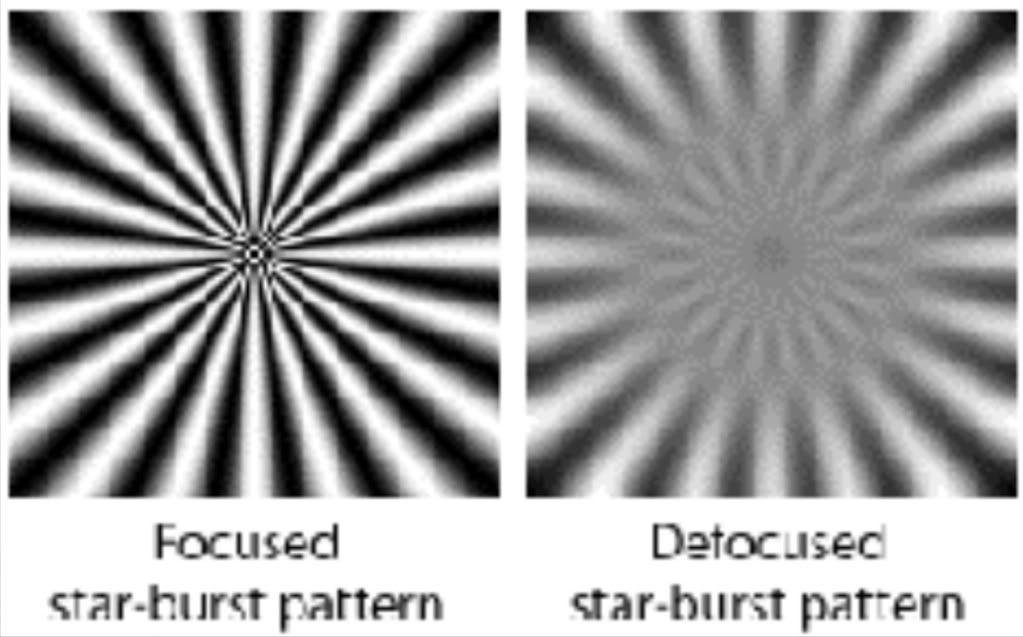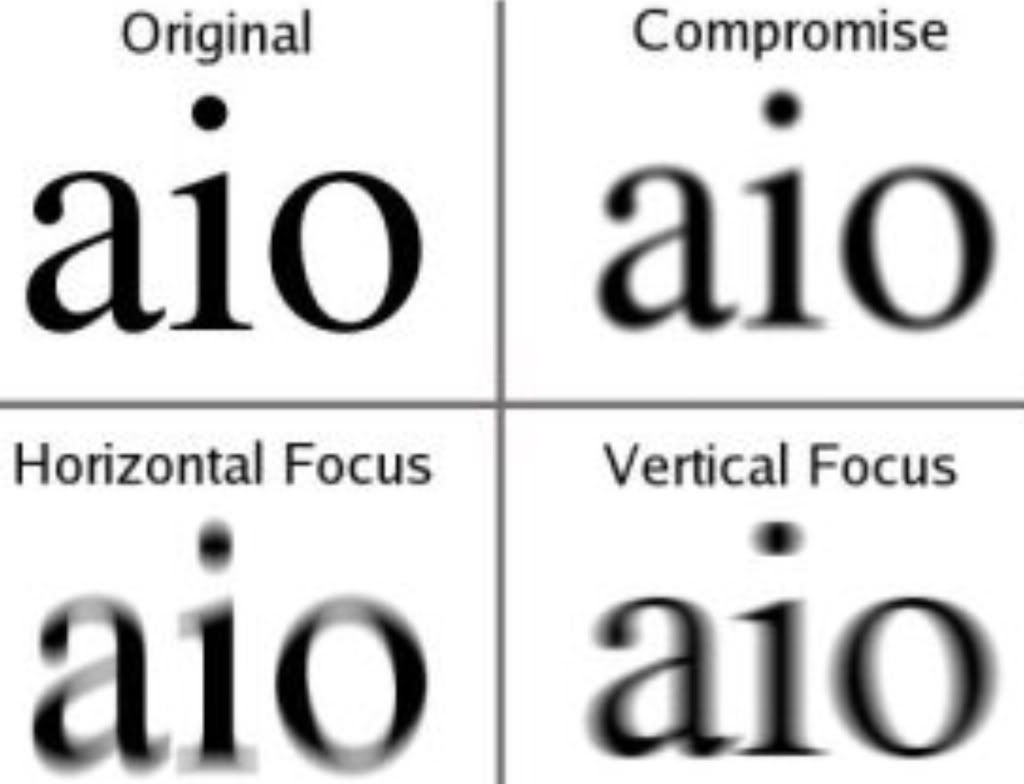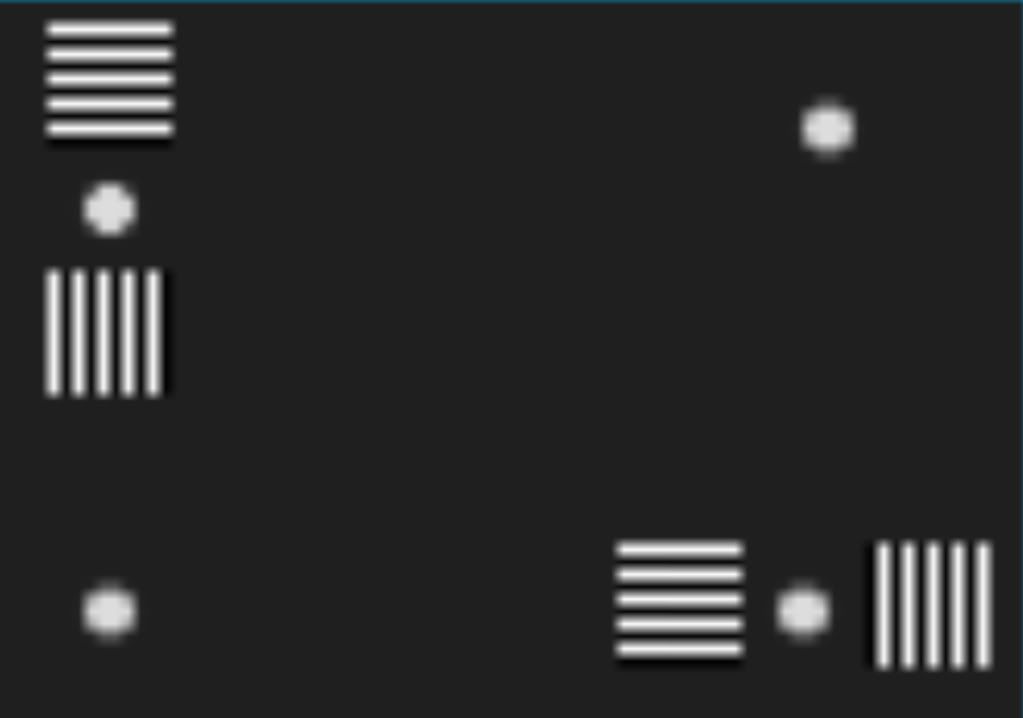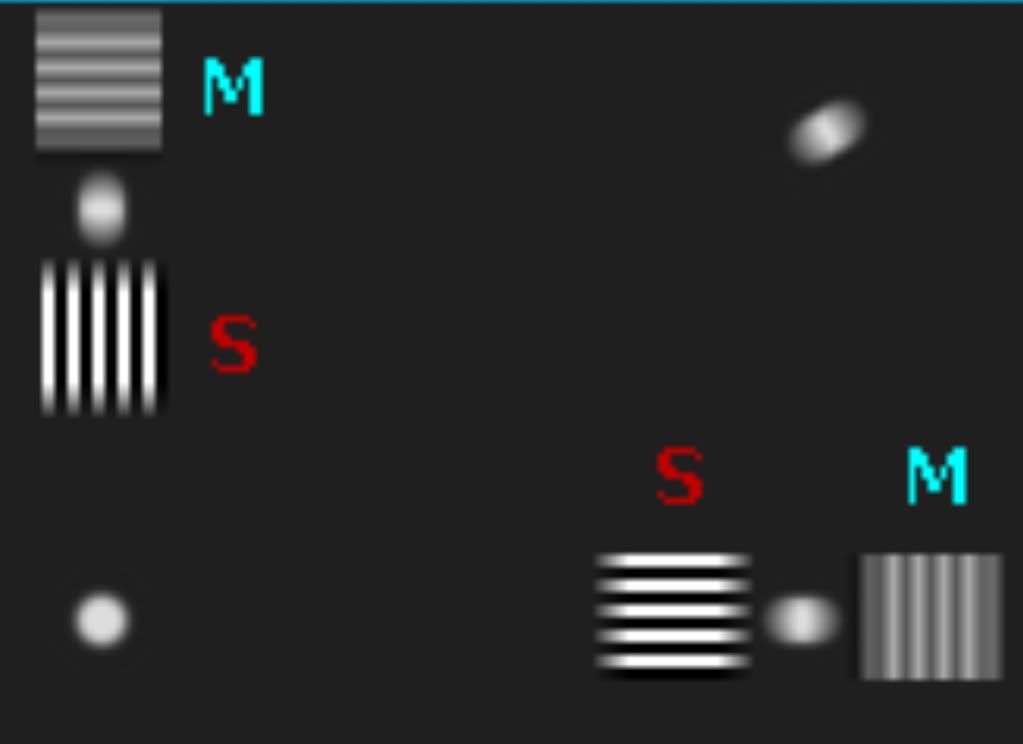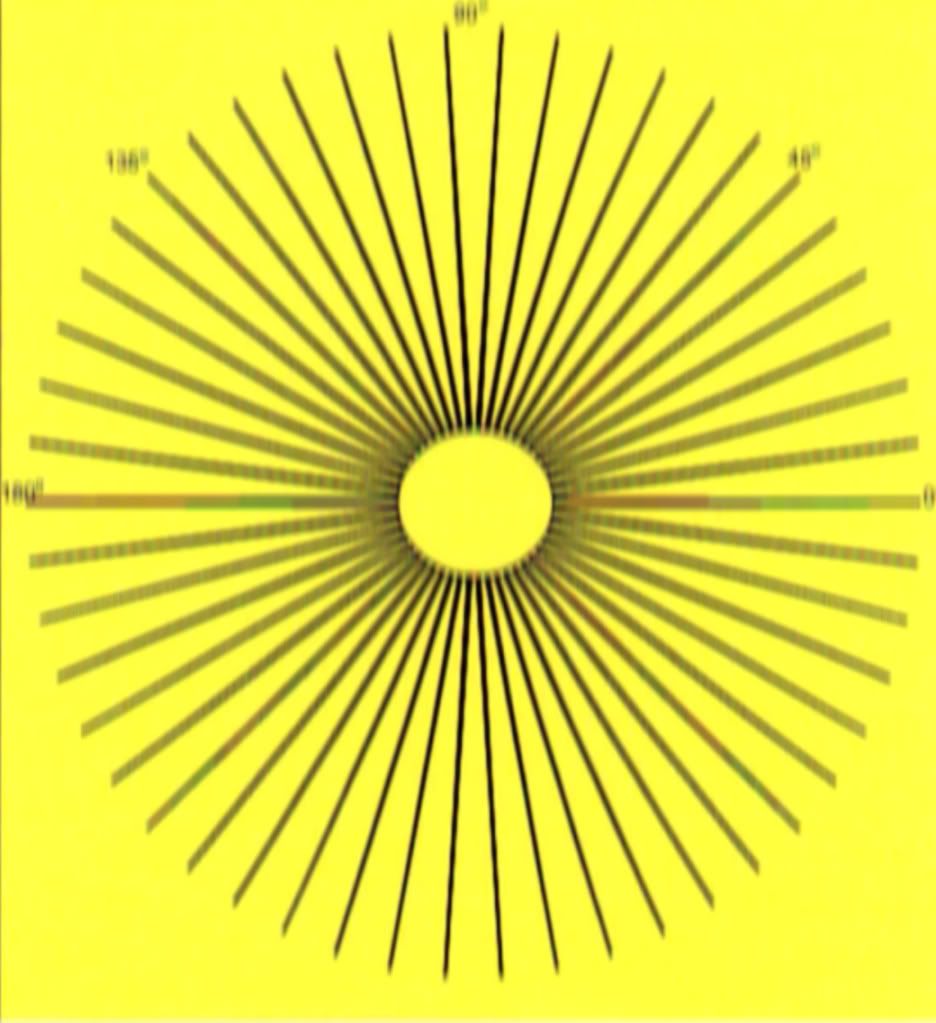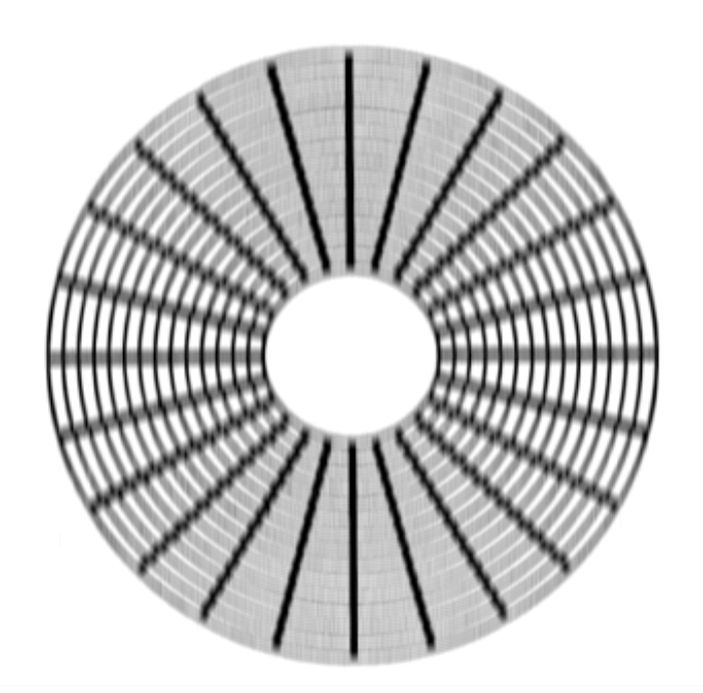* Read trick below, above the pictures for using your iron sights to confirm the results of this test
Astigmatisms not only effect your ability to see reflex and holographic sights, but traditional riflescopes as well. For those who are not familiar with them, an astigmatism (simply put) is an irregularity in the shape of your cornea that causes refractive errors. Essentially, because it is not properly circular in shape it causes a wide range of visual distortions that can range from barely detectable to debilitating.
Well, so what you may be asking. Many of us can drive, work, shoot just fine (or exceedingly well) and made short work of the eye chart at their local DMV. It's important because if you do have this issue, your vision can be improved upon and corrected. This means no matter how small or to what degree you may have it everything WILL look MUCH better. After correction, the difference can be as noticeable as the bold type used for this sentence. Not only will your Eotech/Aimpoint look as it does in photos (very thin and sharp) but the reticle in your scope will stand out bold and easier to read. This is similar to how much darker and bolder my reticle appeared afterwards. All of your scopes will look nicer and you will notice resolution that was previously undetectable. Because contrast can be limited, your ability to see bullet holes will likely improve as well.
Not too long ago I discovered the degree of astigmatism I have in both of my eyes. Now corrected, it is an incredible difference.
-Astigmatisms are very common (affecting nearly 1 of 3 adults) and you don't have to have near/farsightedness accompanied with it. Many go unchecked as did mine for years, not knowing how much I was missing from my vision.
-Additionally, if you already wear glasses (for near/farsightedness and have not been reevaluated its possible that although your visual acuity is the same, an astigmatism could have developed in one or both eyes (even though your lenses are still very helpful).
*These tests below are by no means official or definitive. I'm not an optometrist or ophthalmologist, who would use a keratoscope to discover and evalute the nature by measuring your cornea but these views below will give you a pretty good idea as they are fairly standard for evaluation.
To properly view these images, you Will have to adjust the distance you are sitting from your screen depending on your display (computer, tablet, phone etc...).
Although an astigmatism can effect viewing at all distances, you should back up several feet, as far as possible while still clearly making out the lines in each of the diagrams.
This could range from 2-10 feet depending on the size of your display and how large the picture is formatted. You should back up until you can no longer distinguish the image then approach to focus.
Try viewing it at different distances but with only one eye at a time. Cover your other eye, don't close it as you will naturally strain to view.
HOW TO TAKE THE TESTS
*Note: the second picture is an exaggerated example of ones appearance. Notice the graying next to the blocks labeled M.
******* Trick********
I've discovered something interesting I'd like to share as some of you get a chance to look through these. At home, most of us have a correction for astigmatism laying around or mounted atop some of our rifles.
Sorry about the strange pic sizes, try enlarging the first two, I think they are quite helpful.
Feel free to add, comment or ask anything if you think something may be more useful and lease share what your experiences were.
Hope this helps-

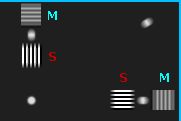
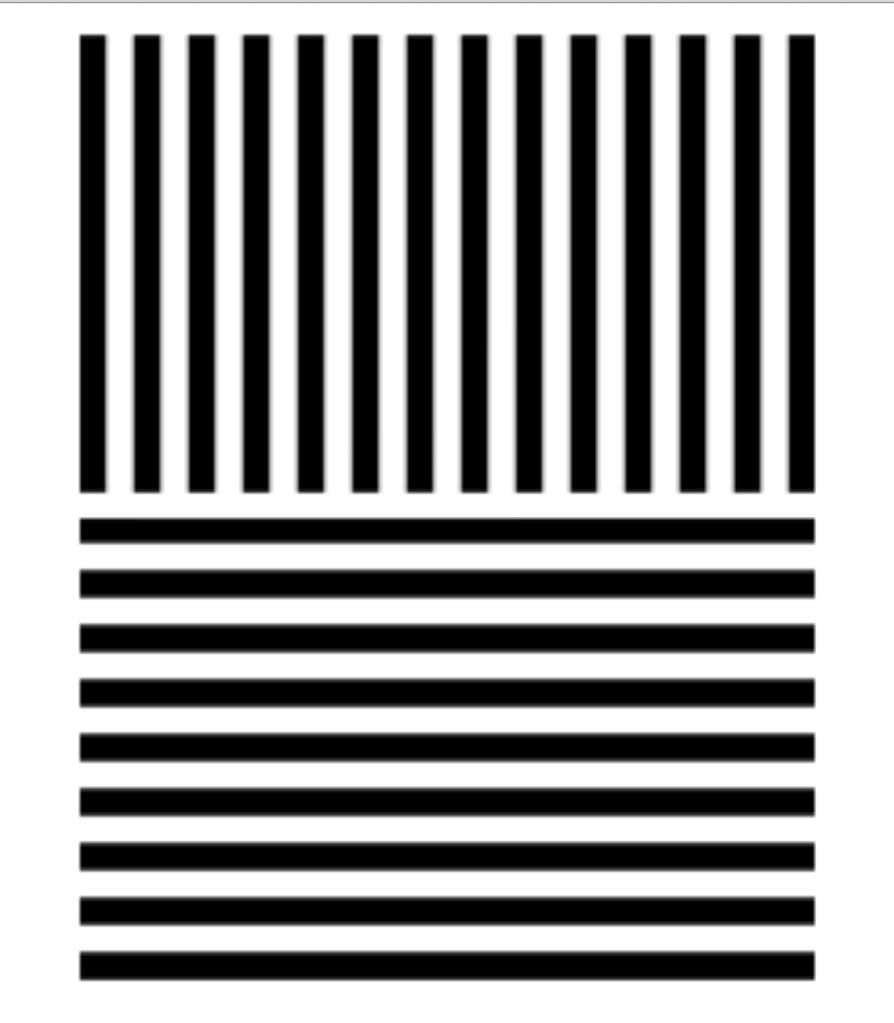

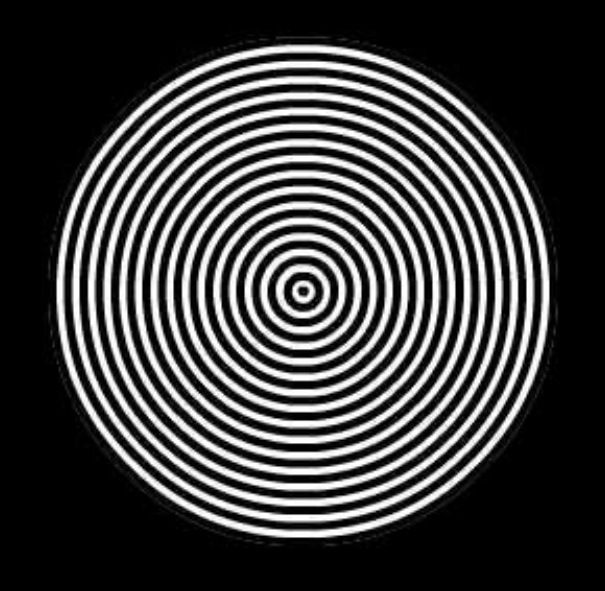
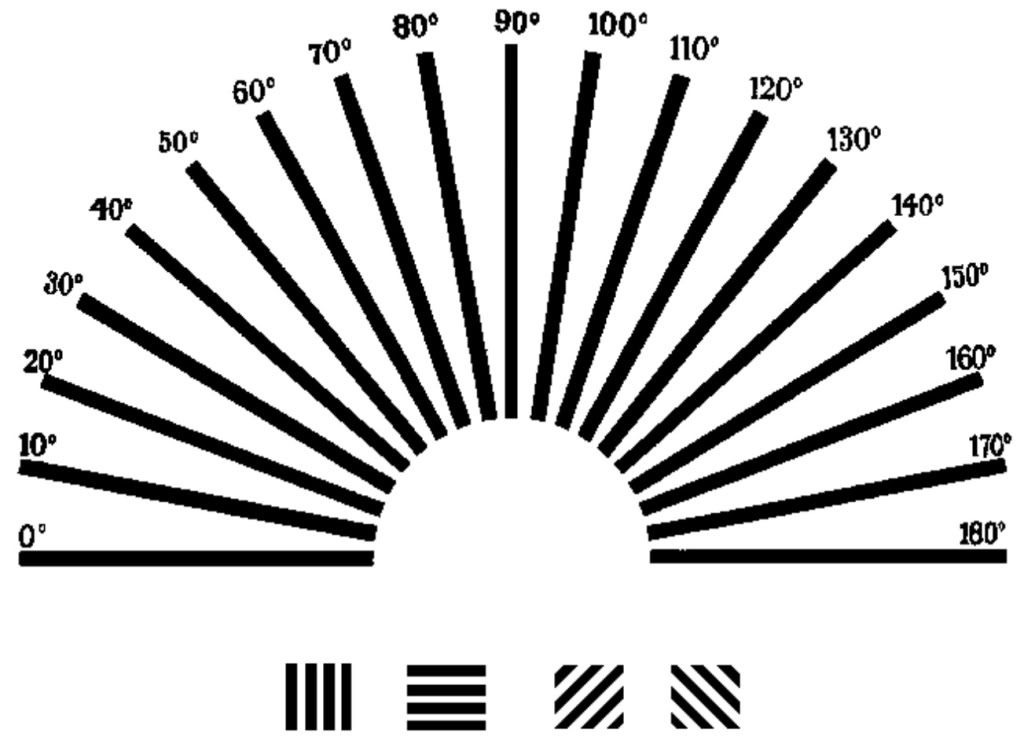
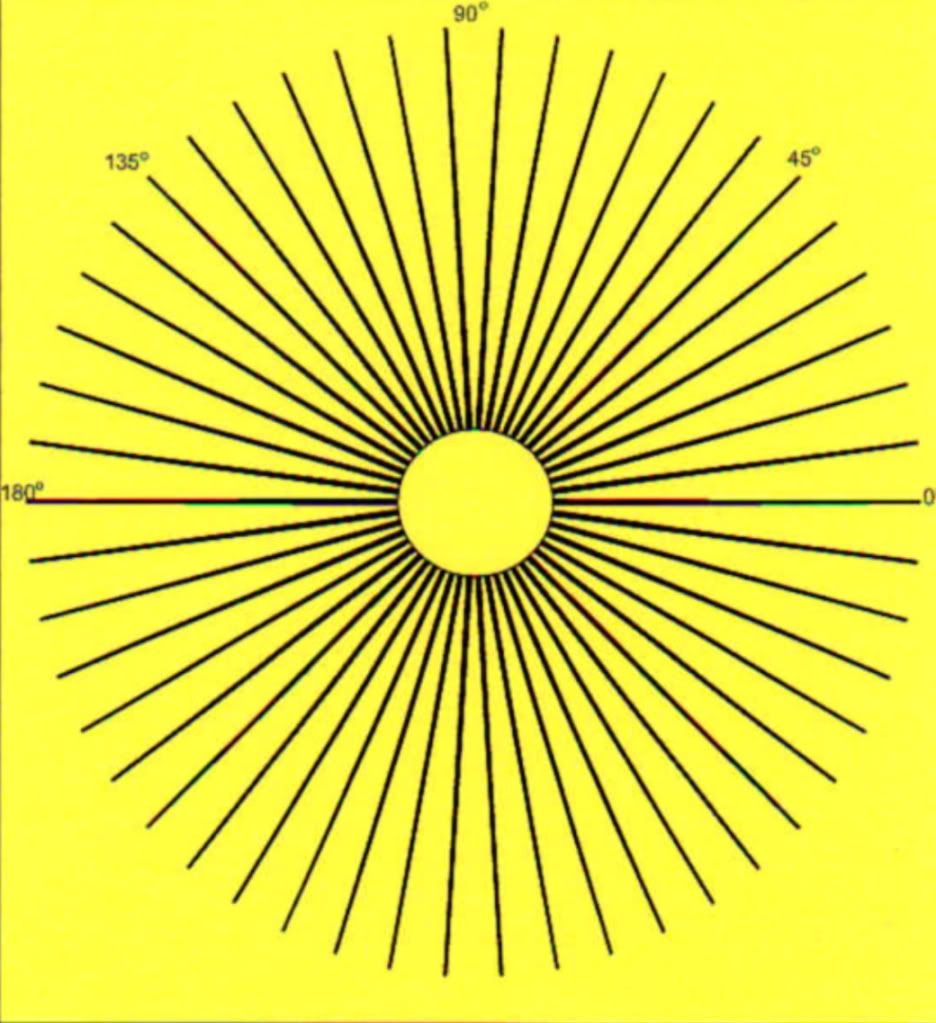
Astigmatisms not only effect your ability to see reflex and holographic sights, but traditional riflescopes as well. For those who are not familiar with them, an astigmatism (simply put) is an irregularity in the shape of your cornea that causes refractive errors. Essentially, because it is not properly circular in shape it causes a wide range of visual distortions that can range from barely detectable to debilitating.
Well, so what you may be asking. Many of us can drive, work, shoot just fine (or exceedingly well) and made short work of the eye chart at their local DMV. It's important because if you do have this issue, your vision can be improved upon and corrected. This means no matter how small or to what degree you may have it everything WILL look MUCH better. After correction, the difference can be as noticeable as the bold type used for this sentence. Not only will your Eotech/Aimpoint look as it does in photos (very thin and sharp) but the reticle in your scope will stand out bold and easier to read. This is similar to how much darker and bolder my reticle appeared afterwards. All of your scopes will look nicer and you will notice resolution that was previously undetectable. Because contrast can be limited, your ability to see bullet holes will likely improve as well.
Not too long ago I discovered the degree of astigmatism I have in both of my eyes. Now corrected, it is an incredible difference.
-Astigmatisms are very common (affecting nearly 1 of 3 adults) and you don't have to have near/farsightedness accompanied with it. Many go unchecked as did mine for years, not knowing how much I was missing from my vision.
-Additionally, if you already wear glasses (for near/farsightedness and have not been reevaluated its possible that although your visual acuity is the same, an astigmatism could have developed in one or both eyes (even though your lenses are still very helpful).
*These tests below are by no means official or definitive. I'm not an optometrist or ophthalmologist, who would use a keratoscope to discover and evalute the nature by measuring your cornea but these views below will give you a pretty good idea as they are fairly standard for evaluation.
To properly view these images, you Will have to adjust the distance you are sitting from your screen depending on your display (computer, tablet, phone etc...).
Although an astigmatism can effect viewing at all distances, you should back up several feet, as far as possible while still clearly making out the lines in each of the diagrams.
This could range from 2-10 feet depending on the size of your display and how large the picture is formatted. You should back up until you can no longer distinguish the image then approach to focus.
Try viewing it at different distances but with only one eye at a time. Cover your other eye, don't close it as you will naturally strain to view.
HOW TO TAKE THE TESTS
- In each image you will see a group or set of lines in different directions with spaces in between them. The lines in the images should be a sharp bold black color that is spread absolutely even throughout the image (except bold white lines in first image).
- Images that have multiple boxes or lines facing different directions should appear EXACTLY the same (shape, size, length, contrast etc...)
- The images although different are perfectly symmetrical, there should be no illusions where any part of the shapes look narrower, darker, lighter etc.
- Take notice if when looking if your eye is drawn to just a section of the image, such as the narrow top and bottom.
- Again, no portion should look more clear than any other part. All of the lines should remain the same clarity at all viewing distances. When an image fades from being too far back, it should do so evenly, alongside any other piece of the image.
UNDERSTANDING THE RESULTS
- There are 2 examples in the following pictures and posts that demonstrate the same image but with exaggerated astigmatic results (yours may not be anywhere near this bad or could be of a different type or from a different curvature.
- The appearance of gray in any black or white spaces is an indication of an astigmatism.
- The loss or reduction of edge sharpness between lines is also an indication.
- Astigmatisms form in many different levels of severity and angles. (Complete grayness or loss of contrast is not the only prerequisite) Because they are irregular shapes they tend to display as so (from the circle/semi with straight lines, many may appear normal where only a few may not be as easy to distinguish)
- Because of the irregularity, the circular image (with circular lines) could show a loss in contrast or graying in the shape of a bow tie, it may be subtle.
- Lines that appear bolder (or not in focus) facing one direction opposed to another is another indication of the presence of astigmatism.
- If you notice any of the above or different irregularities in the images, try either turning your head or the image to the side. What you're seeing should be reversed and is an indication of the angle of your astigmatism.
*Note: the second picture is an exaggerated example of ones appearance. Notice the graying next to the blocks labeled M.
******* Trick********
I've discovered something interesting I'd like to share as some of you get a chance to look through these. At home, most of us have a correction for astigmatism laying around or mounted atop some of our rifles.
- When going through these, look at the picture with one eye blocked as described, then look at the same image through the small aperture on one of your iron sights.
- Must be the small aperture- because of its circular shape it blocks light from entering any outer irregularities and only the rounded center portion of your eye.
- If you have an astigmatism, the difference should be immediate. This is similar to a step performed by an ophthalmologist where they ave you look through a small disk. If no irons available, you should be able to use a tac to make a similar size hole in a piece of paper
Sorry about the strange pic sizes, try enlarging the first two, I think they are quite helpful.
Feel free to add, comment or ask anything if you think something may be more useful and lease share what your experiences were.
Hope this helps-







Last edited:

